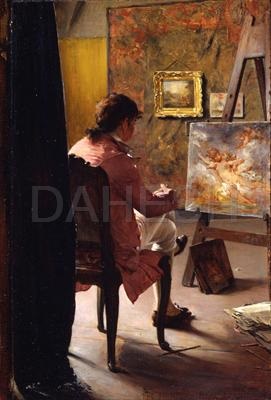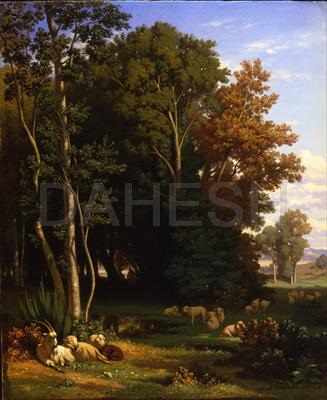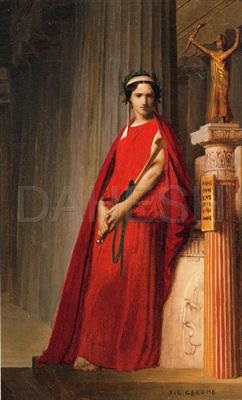Drawn from the rich collections of the Dahesh Museum of Art, Beauty, Passion & Bliss at the Huntsville (AL) Museum of Art features an outstanding selection of paintings and sculptures that embody the 19th-century European academic tradition, which was based on learning to draw the human figure while adhering to principles of ideal beauty epitomized by Classical and Renaissance art.
The exhibition encompasses a wide range of themes and styles, including historical, religious, and mythological works, considered the highest form of art, as well as examples of the ways in which historical themes were transformed into intimate genre scenes, landscapes, idealized rustic subjects, and explorations of the Middle East (the subject of Orientalism, 2019’s exhibition from the Dahesh Museum of Art at the Huntsville Museum of Art). The combination of exquisite technical ability and accessible subject matter especially appealed to wealthy and middle-class European and American collectors. Artists featured include such major figures as Jean-Léon Gérôme (image upper right), William Adolphe Bouguereau, and Alexandre Cabanel, as well as lesser known but equally interesting figures like Ignaz-Marcel Gaugengigl (image upper left) and Jean-Achille Benouville (center image). Especially notable are two splendid paintings by Frederick Arthur Bridgman, born in Tuskegee, Alabama, and hugely successful after academic training in Paris and extensive overseas travel.
J. David Farmer, Dahesh Museum of Art Director of Exhibitions, will inaugurate the exhibition on the evening of March 26 with a lecture describing the important role art academies played in 19th-century art. He will focus on two transformative academies, the renowned École des Beaux-Arts in Paris (established 1648) and the Koninklijke Academie voor Schone Kunsten in Antwerp, Belgium (1663), the two earliest academies formally chartered in Europe. The exhibition is especially strong in paintings and sculptures related to the Paris academy, and further works from the Antwerp academy will introduce less familiar artists who validated Belgium’s rich cultural heritage long before nationhood in 1830. Both academies attracted numerous foreign students, demonstrating the international character of art in the 19th century.





